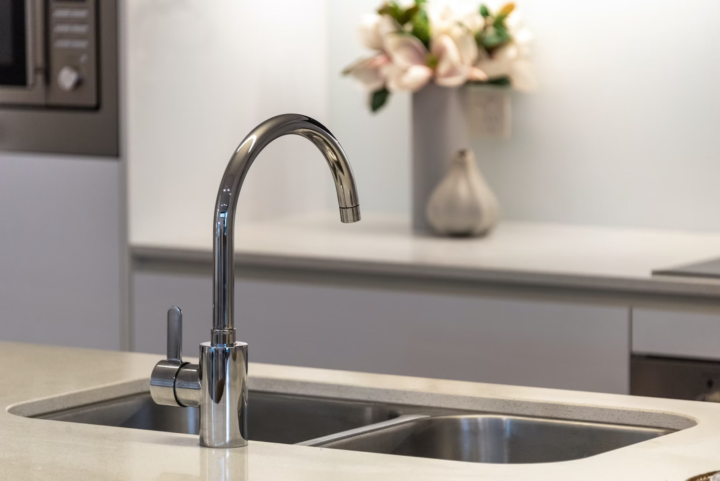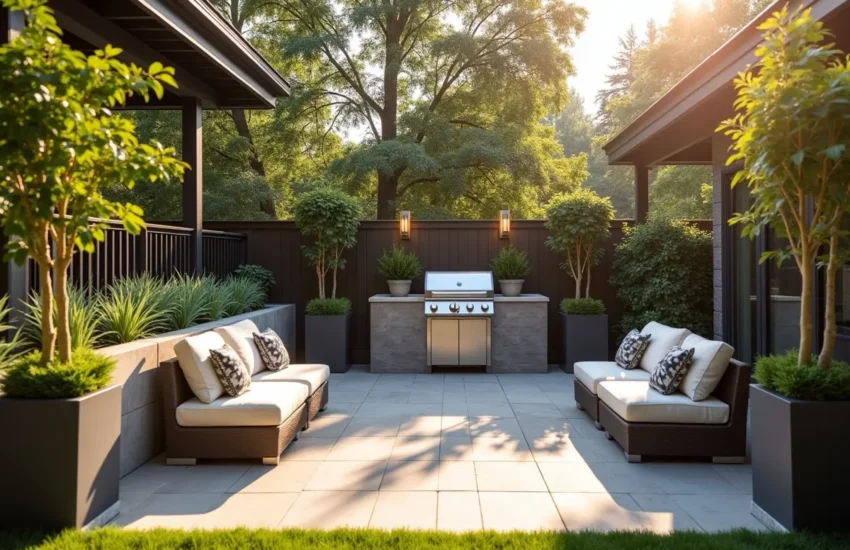What to Look for When Choosing a New Kitchen Tap
The kitchen is often referred to as the heart of the home, where delicious meals are prepared, and memories are made. An essential part of any kitchen is the tap, which not only serves a functional purpose but also contributes to the overall aesthetics of the space.
When it comes to choosing a new kitchen tap, you’ll find yourself faced with a wide array of options, each boasting unique features and designs. To ensure that you make the right choice, it’s crucial to consider various factors that go beyond the superficial appearance of the tap.
In this article, we will explore what to look for when selecting a new kitchen tap, guiding you through the decision-making process step by step.

Style and Aesthetics
When choosing a new kitchen tap, one of the first things to consider is the style and aesthetics. The high-quality tapware you choose should harmonize with your kitchen’s design and create a seamless, unified look. Consider the overall style of your kitchen, whether it’s traditional, modern, rustic, or industrial, and choose a tap that complements that style.
If you have a contemporary kitchen, sleek and minimalistic taps with clean lines and a polished finish can be an excellent choice. In contrast, a more traditional kitchen may benefit from a tap with classic design elements, such as crosshead handles or intricate details. Additionally, the finish of the tap plays a significant role in its overall appearance. Stainless steel, chrome, and brushed nickel finishes are popular choices that offer both durability and a timeless look.
Functionality and Features
Beyond its appearance, a kitchen tap needs to be highly functional to make your daily chores more manageable. Here are some essential features to consider:
- Spout Type: The spout’s height and reach should allow you to comfortably fill large pots and clean bulky dishes. High-arc spouts are ideal for this purpose.
- Single or Dual Handle: Single-handle taps are easy to use and control both temperature and flow with one hand. Dual-handle taps offer separate control over hot and cold water and are a classic choice.
- Pull-Down or Pull-Out Spray: Taps with pull-down or pull-out sprayers are highly versatile, making it easier to rinse dishes and reach different areas of the sink.
- Touchless Technology: Touchless taps are becoming increasingly popular, as they reduce the spread of germs and provide convenience when your hands are dirty. These taps use motion sensors to activate the water flow.
- Water Efficiency: Opt for a tap with a high WaterSense rating to conserve water while maintaining a strong water flow.
- Filtering Systems: If you’re concerned about water quality, consider a tap with built-in water filtering capabilities.
Durability and Material
The durability of your kitchen tap is of utmost importance, as it’s a long-term investment. Taps are typically made from various materials, each with its own advantages and disadvantages. Here are some common materials:
- Brass: Brass taps are durable and corrosion-resistant. They are a reliable choice that can withstand the test of time.
- Stainless Steel: Stainless steel taps are easy to clean, resistant to rust and staining, and offer a modern appearance.
- Chrome: Chrome-plated taps are known for their shiny, mirror-like finish. While they may require more maintenance to keep them looking their best, they are an attractive option.
- Copper: Copper taps are not only durable but also add a touch of elegance to your kitchen. Over time, they develop a unique patina.
When considering material, also think about your water quality. If you have hard water, some materials may be more prone to mineral buildup and may require more frequent maintenance.
Installation and Compatibility
Before making a final decision on your kitchen tap, consider its installation and compatibility with your existing sink or countertop. Most kitchen taps are designed for standard installation, but it’s crucial to check the number of mounting holes in your sink or countertop. Some taps require one hole, while others need two or three. Additionally, verify the spacing between the holes to ensure a snug fit.
If you’re planning to install a new sink along with your tap, make sure the two are compatible in terms of size and style. It’s essential to have a seamless and functional integration between your tap and sink.
Budget Considerations
Budget is a crucial factor in the decision-making process when choosing a new kitchen tap. Taps come in a wide price range, and while it’s tempting to opt for the most luxurious option, it’s essential to find a balance between your needs and your budget. A more expensive tap may offer additional features, higher-quality materials, and a longer warranty, but this doesn’t necessarily mean it’s the best choice for your specific situation.
Consider your needs and preferences, and set a budget accordingly. Research different brands and models to find the best tap that fits both your criteria and your budget. Don’t forget to account for installation costs, which can vary depending on the complexity of the job.
Maintenance and Cleaning
Maintenance and cleaning requirements should not be overlooked when choosing a kitchen tap. Some finishes, like brushed nickel or stainless steel, are more resistant to water spots and fingerprints, making them easier to maintain. On the other hand, taps with intricate designs or detailed finishes may require more meticulous cleaning.
It’s a good practice to regularly clean and maintain your tap to keep it looking and functioning at its best. Some taps may come with specific care instructions, so be sure to follow them to maximize their lifespan.
Selecting a new kitchen tap is an important decision that involves various considerations. By taking into account factors like style, functionality, durability, installation, budget, and maintenance, you can make an informed choice that not only enhances the aesthetics of your kitchen but also serves you well in your daily tasks.
Remember that the perfect kitchen tap for one person may not be the ideal choice for another, so always prioritize your unique needs and preferences when making your decision. In doing so, you’ll find the perfect kitchen tap that not only complements your kitchen but also makes your daily kitchen activities more convenient and enjoyable.


